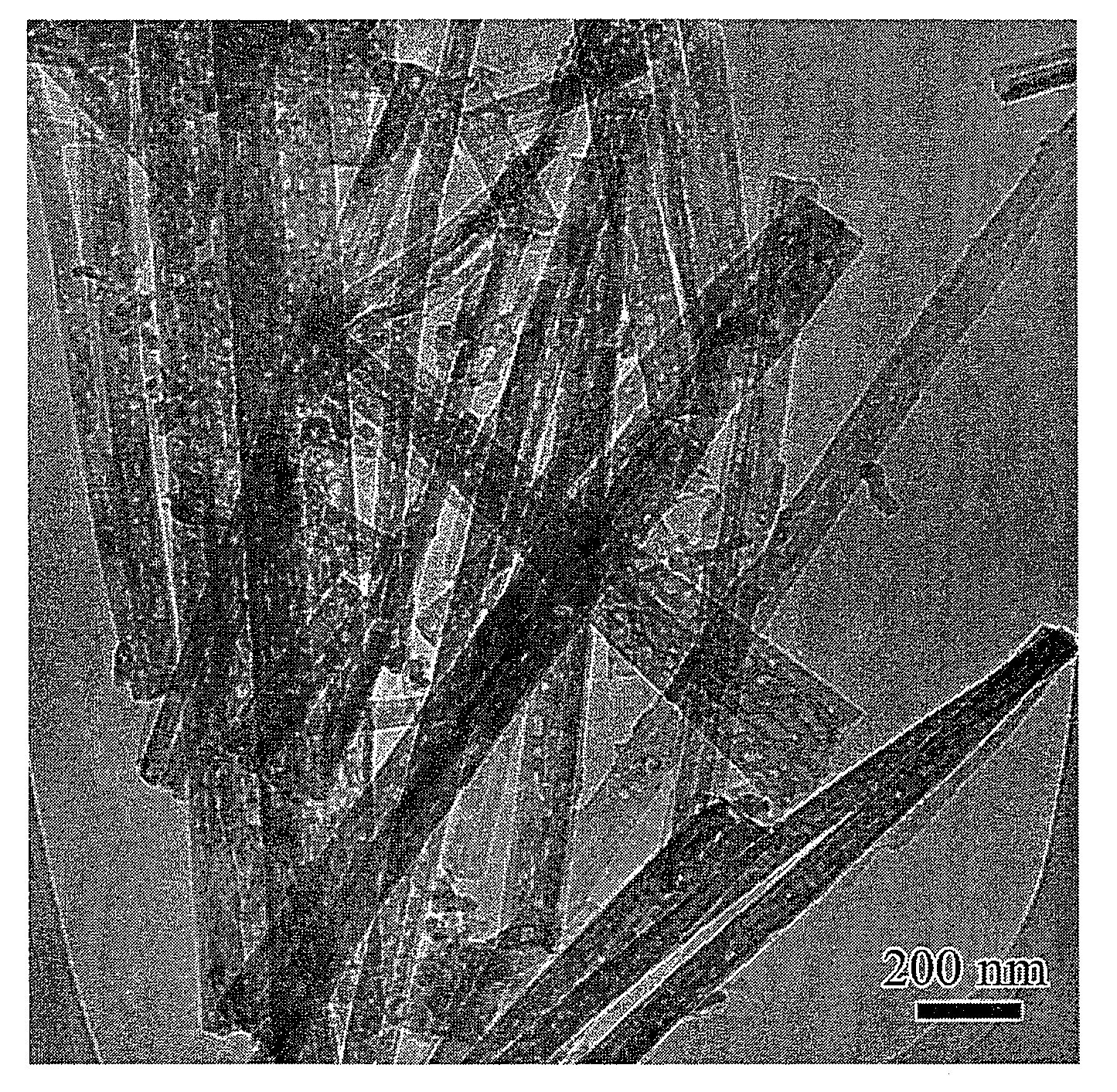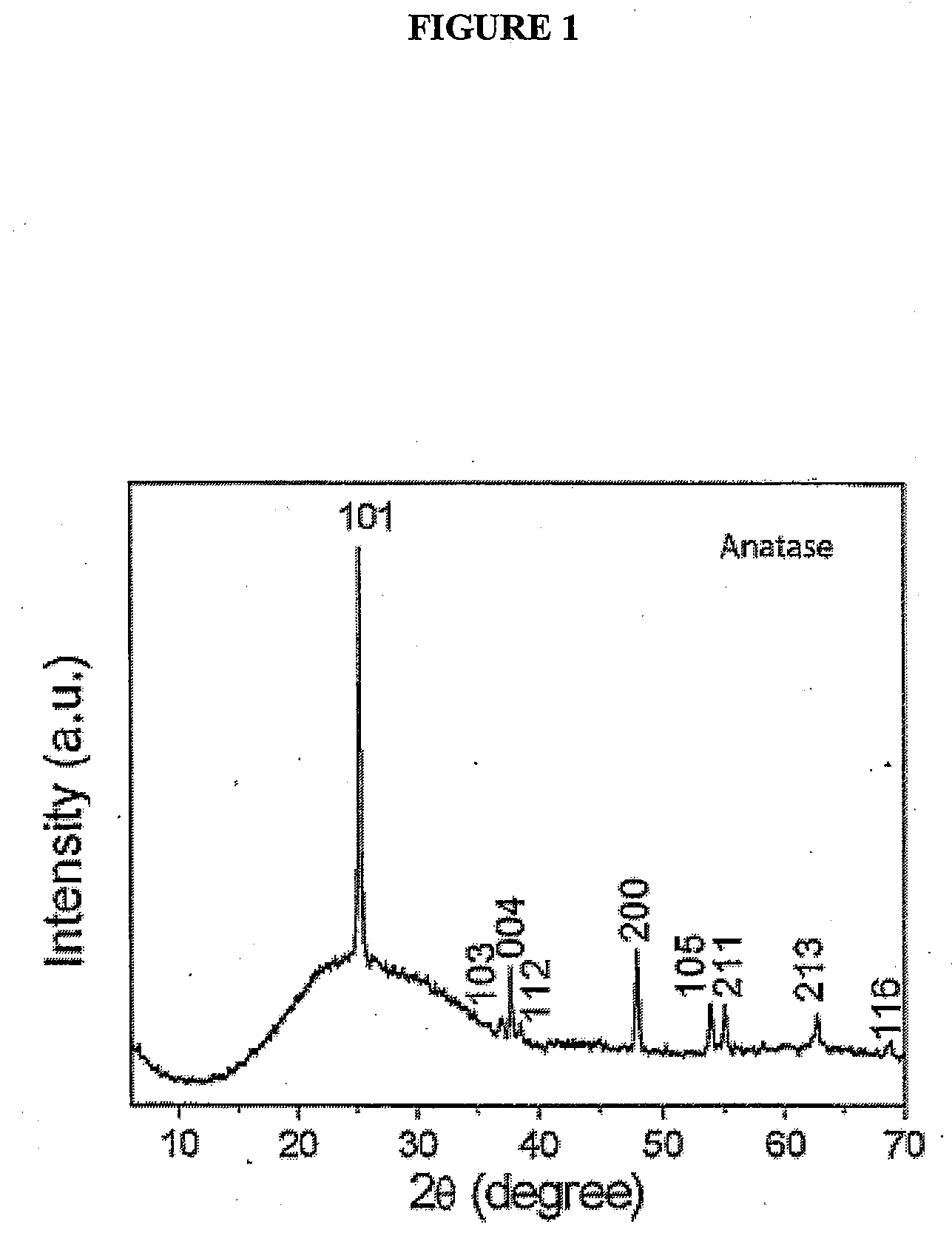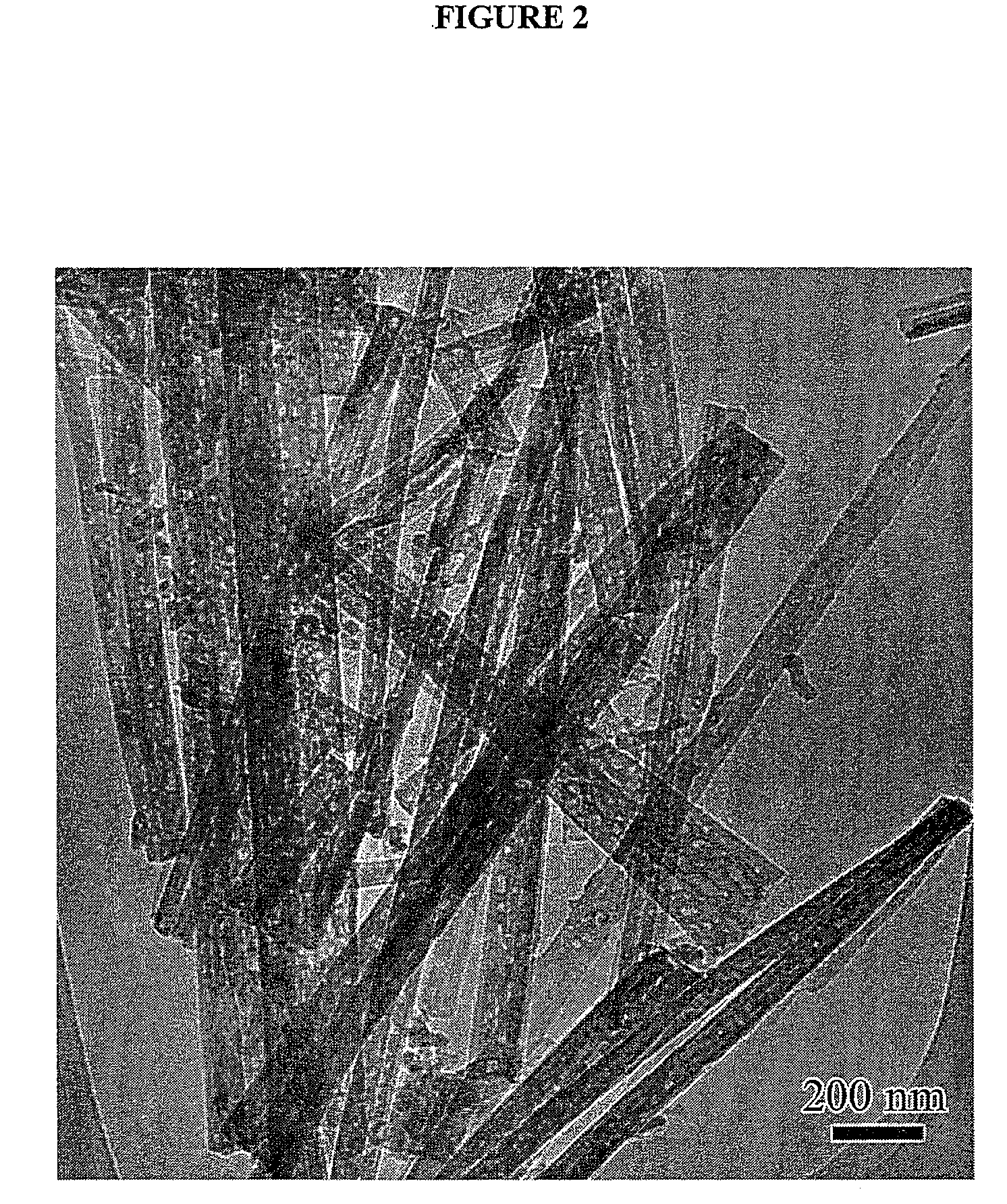Titania Nanocavities and Method of Making
a technology of titanium nanocavities and nanoparticles, which is applied in the field of metal oxide nanoparticles having nanocavities, can solve the problems of inconvenient method, high specialized, expensive, and sometimes dangerous equipment, and achieves enhanced uv absorption, simple and safe production, and the effect of reducing the risk of contamination
- Summary
- Abstract
- Description
- Claims
- Application Information
AI Technical Summary
Benefits of technology
Problems solved by technology
Method used
Image
Examples
example 1
[0039]1 gram of anatase TiO2 and 30 mL of 10N NaOH were placed in a polyfluoroethylene container. The container was places in an autoclave and heated in an oven at a temperature of 170° C. for 3 days. After this alkali treatment, the product was removed and placed in a flask containing 500 mL of a solution of hydrochloric acid (1.5% by weight) and stirred for 16 hours. The solid product was filtered from the solution and dried naturally. The dried product was then heated in air for two hours at 675° C. The resultant solid was shown to be anatase TiO2 nanorods with regular polyhedral nanocavities by XRD as illustrated in FIG. 1, low resolution TEM as illustrated in FIG. 2, and high resolution TEM as illustrated in FIG. 2. Preliminary results indicate that the resultant solid absorbed substantially more light in the UV-region compared with analogous material without nanocavities (prepared by heat treatment under argon instead of air).
example 2
[0040]Fe-doped TiO2 with nanocavities was prepared by the following method: 1 gram of anatase TiO2 and 30 mL of 10N NaOH were placed in an iron container. The container was placed in an autoclave and heated in an oven at a temperature of 160° C. for 3 days with a stirring speed of approximately 1000 Hz. After this alkali treatment, the product was removed and placed in a glass bottle with 500 mL of a solution of nitric acid (3% by weight) and stirred for 12 hours. The solid product was filtered from the solution and dried naturally. The dried product was heated in a pure oxygen atmosphere for two hours at 600° C.
example 3
[0041]N-doped TiO2 with nanocavities was prepared by the following method: 1 gram of anatase TiO2 and 30 mL of 15N KOH were placed in a fluoropolymer container. The container was placed in an autoclave and heated in an oven at a temperature of 170° C. for 3 days. After this alkali treatment, the product was removed and placed in a flask with 500 mL of a solution of hydrochloric acid (1.5% by weight) and stirred for 16 hours. The solid product was filtered from the solution and dried naturally. The dried product was then heated in ammonia for two hours at 650° C.
PUM
| Property | Measurement | Unit |
|---|---|---|
| Temperature | aaaaa | aaaaa |
| Temperature | aaaaa | aaaaa |
| Temperature | aaaaa | aaaaa |
Abstract
Description
Claims
Application Information
 Login to View More
Login to View More - R&D
- Intellectual Property
- Life Sciences
- Materials
- Tech Scout
- Unparalleled Data Quality
- Higher Quality Content
- 60% Fewer Hallucinations
Browse by: Latest US Patents, China's latest patents, Technical Efficacy Thesaurus, Application Domain, Technology Topic, Popular Technical Reports.
© 2025 PatSnap. All rights reserved.Legal|Privacy policy|Modern Slavery Act Transparency Statement|Sitemap|About US| Contact US: help@patsnap.com



